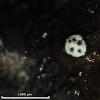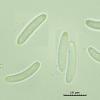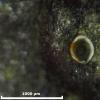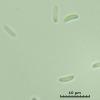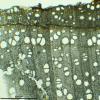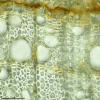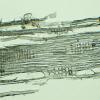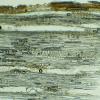
15-11-2025 23:22
Mario FilippaHello,this is what I think to be Hymenoscyphus mac

14-11-2025 16:26
 Marian Jagers
Marian Jagers
Hello everyone, On dead wood of Cytisus scoparius

15-11-2025 20:25
 Riet van Oosten
Riet van Oosten
Hello, Found by Laurens van der Linde, Nov. 2025

14-11-2025 18:31
 Lothar Krieglsteiner
Lothar Krieglsteiner
Hello,can somebody provide me with a file of:Rothe

12-11-2025 09:25
 Viktorie Halasu
Viktorie Halasu
Hello, I need help with a pale terrestric Pseudom

11-11-2025 20:16
Bohan JiaHi, lastly I have found these tiny yellow decayin

09-11-2025 13:20
Hello.A tiny ascomycete, appearing as erupting gra
Valsa on Salix
Juuso Äikäs,
14-03-2021 14:53
Spore measurements:
(14.3) 15 - 17.9 × (2.9) 3.2 - 3.6 (3.7) µm
Q = (4.2) 4.7 - 5.36 (5.4) ; N = 10
Me = 16.7 × 3.4 µm ; Qe = 5
I think this is Valsa or something like that, but further i can't tell. Maybe someone knows the species?
Lothar Krieglsteiner,
14-03-2021 14:59

Re : Valsa on Salix
I would compare V. nivea (Leucostoma niveum).
Best, Lothar
Best, Lothar
Juuso Äikäs,
14-03-2021 15:15
Re : Valsa on Salix
Thank you for the answer! I searched some info and according to it V. nivea grows on Populus and has spores that are a bit smaller. Although I'm not 100 % sure the substrate is Salix... But maybe I'll name this Valsa cf. nivea if no better candidates come by.
Lothar Krieglsteiner,
14-03-2021 15:38

Re : Valsa on Salix
http://www.vnm-ulm.de/mitteilungen/H32_Pyrenomyceten.pdf
The link leads to a paper with 4 Leucostoma-species, L. niveum on Salicaceae (key), exactly on Salix (description).
Populus and Salix are closely related and share a lot of fungi.
If the spores are too large, this is another point. Somebody else has to comment this.
Best, Lothar
The link leads to a paper with 4 Leucostoma-species, L. niveum on Salicaceae (key), exactly on Salix (description).
Populus and Salix are closely related and share a lot of fungi.
If the spores are too large, this is another point. Somebody else has to comment this.
Best, Lothar
Juuso Äikäs,
14-03-2021 16:00
Re : Valsa on Salix
Ok, thanks for the clarification. This seems to be a tricky group with plenty of synonyms and some mixed information.
Pavol Palo,
14-03-2021 17:55
Re : Valsa on Salix
Hi,
Are you sure it couldn't be Sorbus aucuparia? What were the dimensions of the Ascii?
Best, Pavol
Are you sure it couldn't be Sorbus aucuparia? What were the dimensions of the Ascii?
Best, Pavol
Vera Hayova,
14-03-2021 23:31
Re : Valsa on Salix
Hi Juuso,
This fungus does not look like Leucostoma niveum, although spore dimensions fit well. Plus, L. niveum has also 4-spored asci, not only 8-spored. And you are not sure the host is Salix.
Most probably, the host belongs to any Rosaceae and the fungus may be Leucostoma persoonii (or Cytospora leucostoma now).
Best regards,
Vera
This fungus does not look like Leucostoma niveum, although spore dimensions fit well. Plus, L. niveum has also 4-spored asci, not only 8-spored. And you are not sure the host is Salix.
Most probably, the host belongs to any Rosaceae and the fungus may be Leucostoma persoonii (or Cytospora leucostoma now).
Best regards,
Vera
Juuso Äikäs,
15-03-2021 14:29
Re : Valsa on Salix
Thanks for the answers! I measured three asci and they were 47 - 56 × 10 - 14 microns.
I looked at the sample again and there was the anamorph as well, filled with orange-brown goo. The conidia measure 5.1 - 6.2 × 1.5 - 1.7 microns.
I looked at the wood anatomy as well and took a few pics of it too (transverse and radial sections). But lacking the experince in this field, it doesn't really say anything to me.
Juuso Äikäs,
16-03-2021 18:09
Re : Valsa on Salix
I wonder if the new data fits L. persoonii or could this still be something else? Didn't find much info about that species... I'm beginning to think that the substrate might actually be Sorbus like Pavol suspected. Maybe I'll later try to compare the anatomy with something I know is Sorbus.
Pavol Palo,
16-03-2021 20:20
Re : Valsa on Salix
Hi,
Try to compare with Leucostoma massarianum
Best, Pavol
Try to compare with Leucostoma massarianum
Best, Pavol
Viktorie Halasu,
16-03-2021 20:29

Re : Valsa on Salix
Hello Juuso,
I tried to ID your wood with the key here: http://www.woodanatomy.ch/ident_key.html (if I interpret it correctly: wood semi-ring-porous wood, radial pore clusters present, rays bi- or triseriate, 7-10(-20?) cells long, maybe heterogenous rays?, simple perforation plates?, spiral thickenings present).
Some good matches seem to be Prunus padus or P. mahaleb (mutually indistinguishable, http://www.woodanatomy.ch/species.php?code=PNPA), maybe Frangula (http://www.woodanatomy.ch/species.php?code=FRAL), maybe Ligustrum (http://www.woodanatomy.ch/species.php?code=LGVU). Others like Viburnum, Sambucus or Sorbus aucuparia seem to me less probably, Sorbus is rather diffuse-porous, but better check them too, I'm not that much experienced in wood anatomy.
Best wishes,
Viktorie
I tried to ID your wood with the key here: http://www.woodanatomy.ch/ident_key.html (if I interpret it correctly: wood semi-ring-porous wood, radial pore clusters present, rays bi- or triseriate, 7-10(-20?) cells long, maybe heterogenous rays?, simple perforation plates?, spiral thickenings present).
Some good matches seem to be Prunus padus or P. mahaleb (mutually indistinguishable, http://www.woodanatomy.ch/species.php?code=PNPA), maybe Frangula (http://www.woodanatomy.ch/species.php?code=FRAL), maybe Ligustrum (http://www.woodanatomy.ch/species.php?code=LGVU). Others like Viburnum, Sambucus or Sorbus aucuparia seem to me less probably, Sorbus is rather diffuse-porous, but better check them too, I'm not that much experienced in wood anatomy.
Best wishes,
Viktorie
Juuso Äikäs,
16-03-2021 22:12
Re : Valsa on Salix
Thanks a lot to Viktorie as well! Prunus padus could be also possible, I'll try to compare to that too. It's quite difficult to ID a young, thin tree with no leaves! But I have both Sorbus aucuparia and Prunus padus nearby where I live and hopefully this comparison will bring about some clarity.
